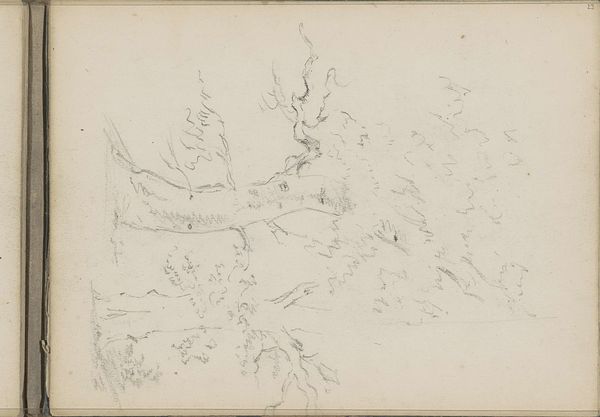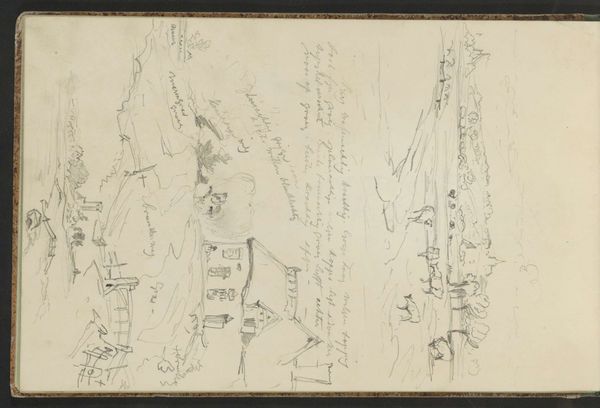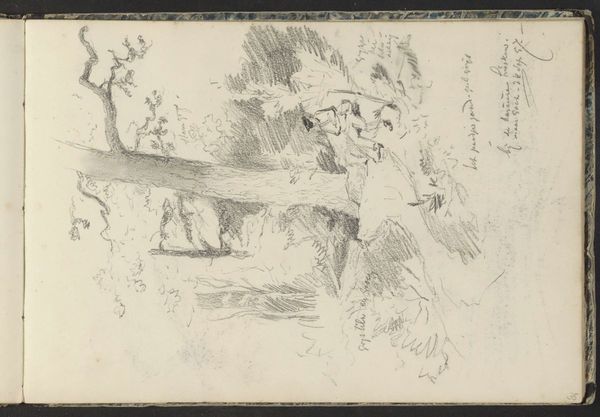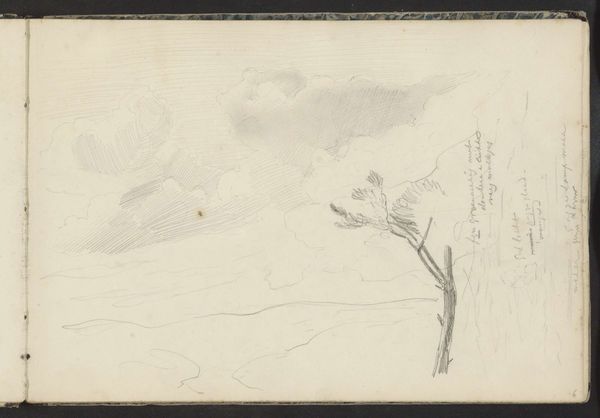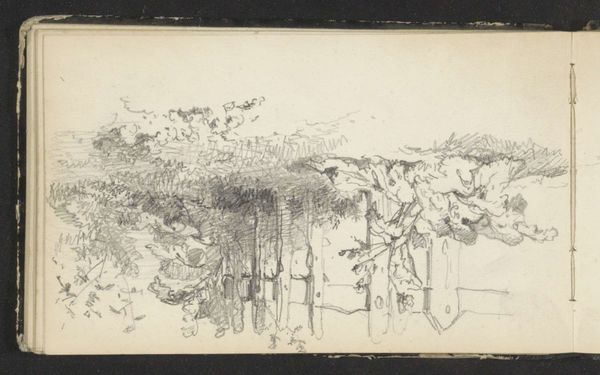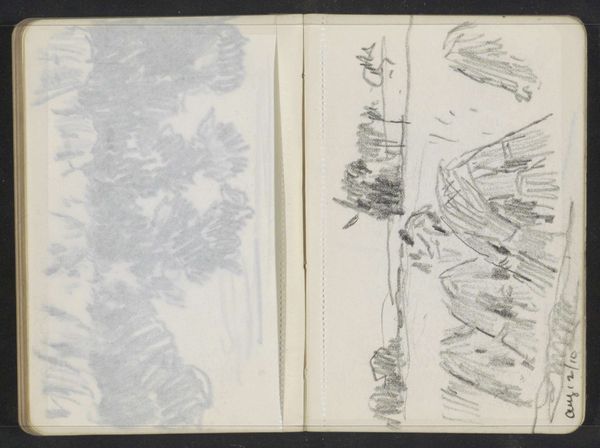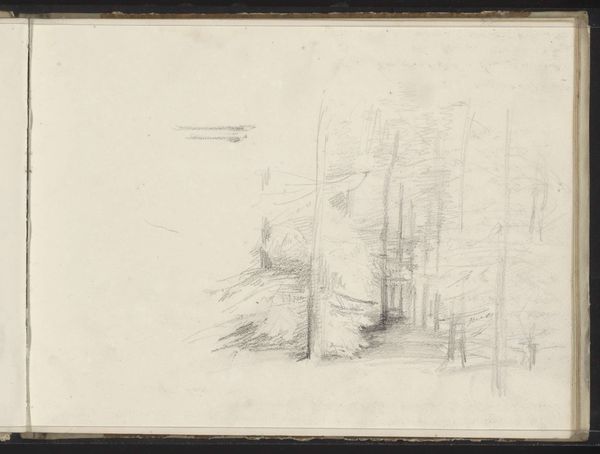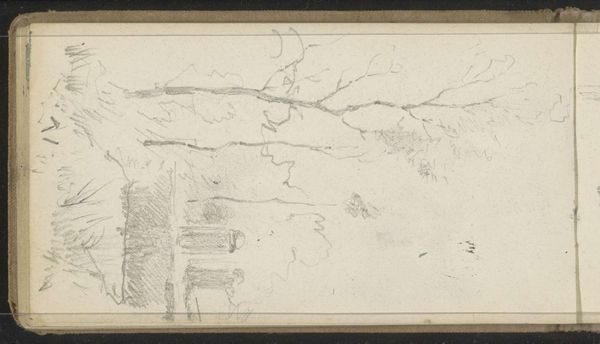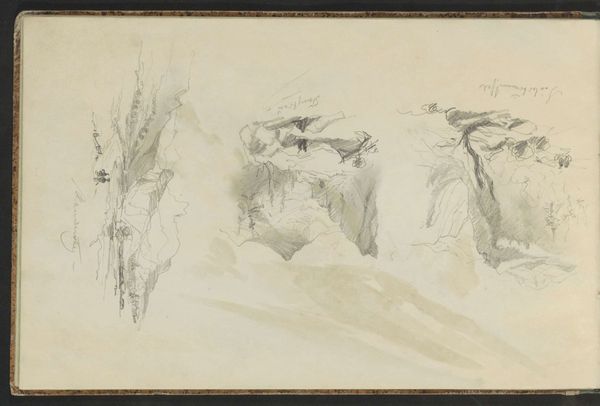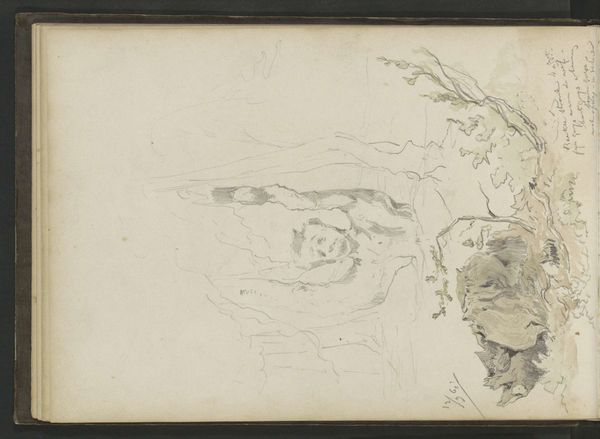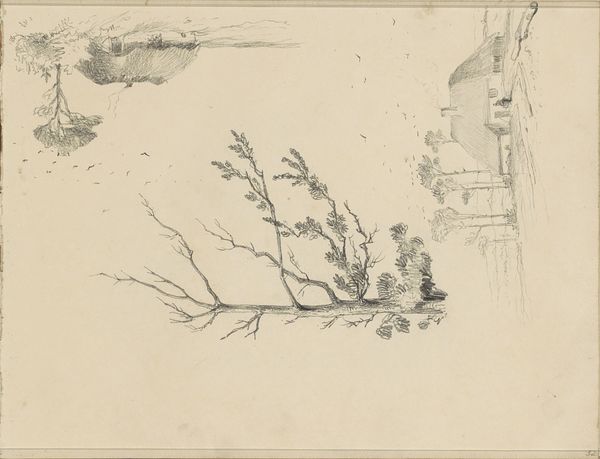
Gezicht op Oirschot en de Grote Peel in Noord-Brabant 1868 - 1869
0:00
0:00
johannestavenraat
Rijksmuseum
drawing, pencil
#
drawing
#
landscape
#
pencil
#
realism
Copyright: Rijks Museum: Open Domain
Curator: This is Johannes Tavenraat’s "View of Oirschot and the Great Peel in North Brabant," a pencil drawing made between 1868 and 1869, now residing at the Rijksmuseum. Editor: It has a rather bleak feeling to it, even for a landscape. The lines are so sparse and hurried. A sense of melancholy seems to permeate the sketches. Curator: The landscapes of Tavenraat are fascinating studies into how 19th-century Dutch artists sought to define a national identity rooted in its land. Note the focus on capturing the vast, somewhat desolate, open spaces—a counterpoint perhaps to the industrialized cityscapes. Editor: I'm more struck by the composition. It feels incomplete, almost like a collection of studies on a single page, but those stark divisions on the page, they pull my eye. The light and shadow barely exist; only pure, hard line defines everything. Curator: He was working in a period where Realism held sway, so we must consider the historical value as a truthful record. There is an attention to the minute details in the trees which serves an objective purpose. Editor: Objective maybe, but notice the figure included in the bottom corner. It's such a casual, yet well-formed drawing. And with a posed man right next to the landscape studies… it shows contrast in technique, perhaps? A deliberate formal decision. Curator: Indeed. Consider how Tavenraat, rooted in a specific time and place, captured what he saw and felt about the changing Dutch landscape and culture. It provides a window into the complex dynamics of 19th-century Dutch society and its self-representation. Editor: The beauty of such sketchbooks resides in the eye it offers onto an artist's pure skill: unfiltered, it conveys more than what historical background tells us about the picture’s period of creation. Curator: And with this context, one is encouraged to continue and see these themes as representations that connect through generations. Editor: The bare bones are compelling in themselves to see how these techniques work together here in practice.
Comments
No comments
Be the first to comment and join the conversation on the ultimate creative platform.

